《英语教学法教程》课件—11
- 格式:ppt
- 大小:1.33 MB
- 文档页数:61
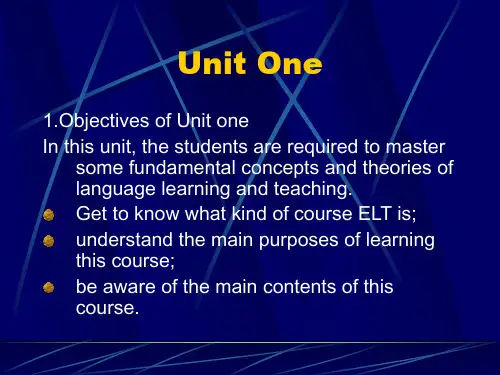
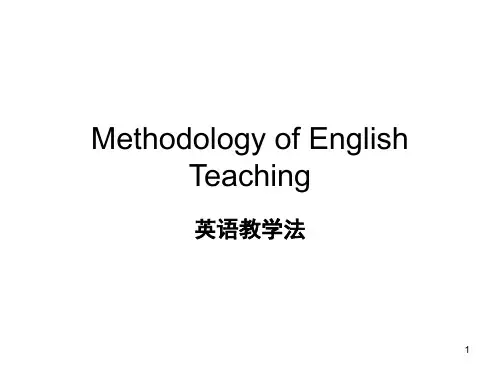
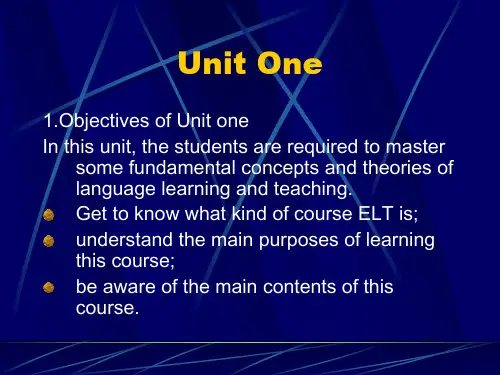
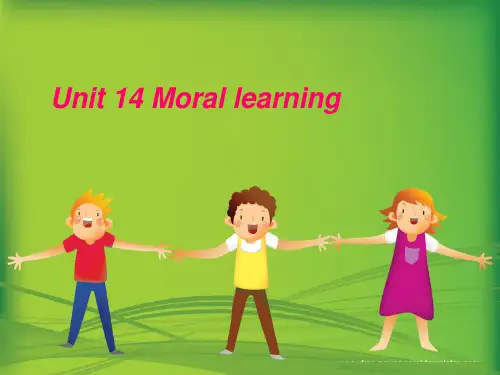
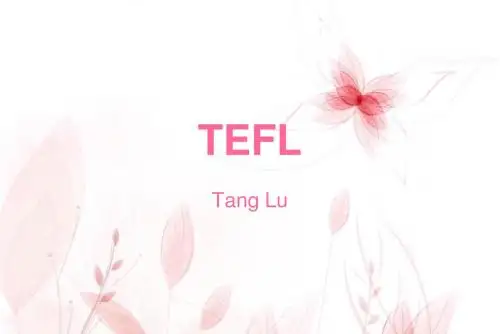
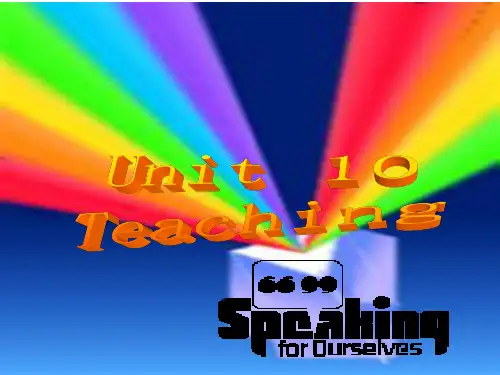
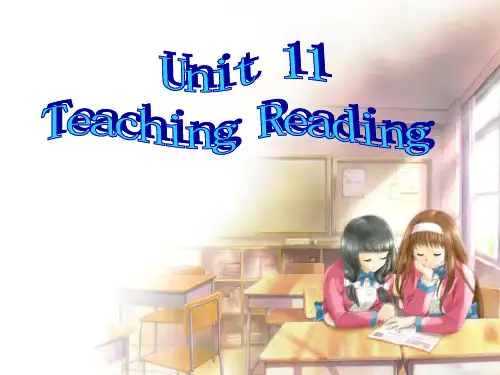
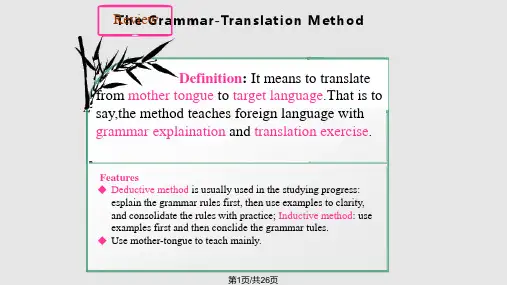
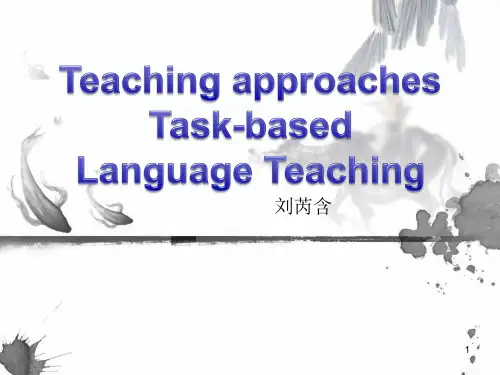
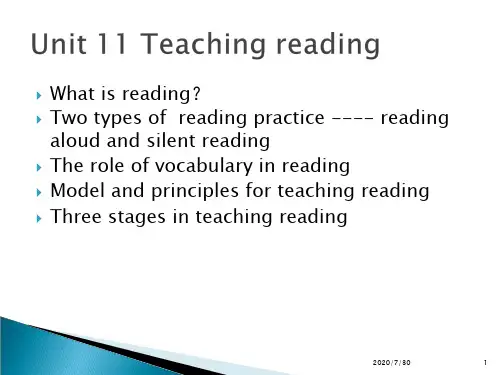

《英语教学法教案》PPT课件第一章:教学方法概述1.1 教学方法的定义1.2 教学方法的重要性1.3 常见的教学方法介绍第二章:直接教学法2.1 直接教学法的原理2.2 直接教学法的步骤2.3 直接教学法的优缺点第三章:任务型教学法3.1 任务型教学法的理论基础3.2 任务型教学法的实施步骤3.3 任务型教学法的优缺点第四章:全身反应教学法4.1 全身反应教学法的原理4.2 全身反应教学法的实施步骤4.3 全身反应教学法的优缺点第五章:分组合作教学法5.1 分组合作教学法的原理5.2 分组合作教学法的实施步骤5.3 分组合作教学法的优缺点第六章:交际式教学法6.1 交际式教学法的理论基础6.2 交际式教学法的实施步骤6.3 交际式教学法的优缺点第七章:沉默法7.1 沉默法的原理7.2 沉默法的实施步骤7.3 沉默法的优缺点第八章:计算机辅助教学法8.1 计算机辅助教学法的原理8.2 计算机辅助教学法的实施步骤8.3 计算机辅助教学法的优缺点第九章:游戏教学法9.1 游戏教学法的原理9.2 游戏教学法的实施步骤9.3 游戏教学法的优缺点第十章:评估与反馈10.1 教学评估的重要性10.2 常见的教学评估方法10.3 教学反馈的技巧重点和难点解析一、教学方法概述难点解析:理解不同教学方法之间的差异以及如何根据学生的需求和教学目标选择合适的教学方法。
二、直接教学法难点解析:实施直接教学法时,如何有效地使用目标语言进行教学,并引导学生通过实践和应用来掌握语言知识。
三、任务型教学法难点解析:设计具有实际意义的任务,以及如何评估学生在任务中的表现,确保任务的实施能够有效地促进语言学习。
四、全身反应教学法难点解析:如何通过身体动作和表情来促进语言的学习,以及如何平衡语言输入和输出。
五、分组合作教学法难点解析:如何合理分组,以及如何引导小组成员进行有效合作,确保每个学生都能在小组活动中积极参与和学习。
六、交际式教学法难点解析:如何在课堂中模拟真实的交际情境,以及如何评估学生在交际活动中的语言运用能力。
英语教学法教程课件英语教学法教程课件兴趣是最好的老师。
教学方法新颖又富有启发性,可激发学生的学习兴趣,使学生感到有趣、有味、有奇、有惑。
英语教学中,巧用情境教学法不失为一条锦囊妙计。
创设情境的方法很多,结合我多年来的教学实践,从课堂教学和课外教学两方面着手,总结如下:一、在课堂上创设情境1.利用实物,巧设情境教师通过实物演示情境能使学生边学习边体会所学知识,在实际生活中的应用,同时培养学生直接用英语思维的习惯。
如:教学“There be”句型、人体部位、方位词、形容词的比较等级都可用事物来演示教材内容。
再如,在讲授涉及问路的主题时,利用教室的课桌作为直观教具,有序排列,中间空出适当距离用做街道社区,然后让学生把课前自制的带有单位如school,hospital,toilet,the bus stop,the police station等的卡片放在课桌上,表示各建筑物所处的位置,形成某个建筑群的模拟情景,再让学生操练陌生人问路的对话。
在这种现实的“浓缩版”中,学生就能直观地理解向左转与向右转,并且懂得中西方在交通规则差异等方面的文化内容。
同时,学生的责任感、道德感与合作意识也得到了强化。
2.语言描述,引入情境充分利用教材中的课文创设问题情境。
教师可以向学生提出富有启发性的问题,制造悬念,创设问题情境,可以连珠炮式地提问,或者设置“突如其来的提问”,让学生就某个问题随便说说他们知道的东西。
让学生说出他们能想到的情况,如果说不出来,教师可以提示。
突如其来的提问可以使学习生动活泼,能引起学生临场发挥的冲动,获得成功感,增强学习的兴趣与信心。
例如:在讲解dangerous和careful时,课前我先安排一个学生,讲授时,我指着教室里的一只灯管“There is some thing wrong with the light.It doesn’t work.Who can mend it”?这时那位同学站起来说:“Don’tworry.I can mend it.”说完,他就走过来并假装去触摸灯管,这时我显出一种极为紧张的表情并大声说:“Becareful!It’s dangerous!”我一边在黑板上用红色粉笔画出“触电”标志符号,一边大声重复:“B ecareful!It’s dangerous!”这时再问同学们它们的含义,学生便能异口同声地说出来。